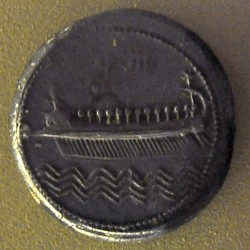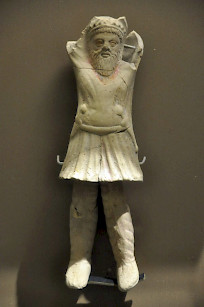Sidon (3)
Q163490Sidon (Hebrew: צִידוֹן, Ṣîdôn; Greek: Σιδών): port in Phoenicia, modern Ṣaydā.
Hellenistic Age

After the death of Artaxerxes III Ochus (338 BCE), civil war broke out in the Persian Empire and it would take quite some time before Darius III Codomannus (r.336-330) was able to restore order. In the meantime, the Macedonian king Alexander the Great had invaded the Persian Empire. In November 333, he defeated Darius near Issus, and went on to take the Phoenician towns: Aradus, Tripolis, Byblos, Berytus, Sidon,note and Tyre. Except for the latter, all towns surrendered as soon as Alexander approached. In Sidon, he appointed Abdalonymus as king.In 332, the Sidonians supported the Macedonians when they besieged Tyre but they also saved many Tyrians when their city was eventually captured.note

After the death of Alexander in 323, civil war broke out between his successors. For a long time, the Phoenician towns belonged to Antigonus the One-Eyed,note but he lost his life during the battle of Ipsus (301). The victors awarded Phoenicia to Seleucus I Nicator,note but Antigonus' son Demetrius managed to keep Sidon and Tyre.note In the end, it was Ptolemy who recaptured the city in 290.
Because it ought to be Seleucus' property, a casus belli had been created: this part of Asia, called Coele Syria, was to be contested between the Seleucid and Ptolemaic Empires in several wars, but after the battle of Panias (200 BCE) in the Fifth Syrian War, it was a solid possession of the Seleucid Empire and it was military base when the Seleucids repressed the revolt of the Jewish Maccabees.note

However, to the Seleucid kings, other ports were more important, like Seleucia and Laodicea. Sidon and Tyre went in decline, but they recalled their glorious past. On their coins, the Sidonians referred to the fact that they had once founded Tyre, Kition, and Carthage. At the same time, the Tyrians claimed to have founded Sidon.note
In 111 BCE, Sidon regained it independence. Official documents were dated to a Sidonian Era that begins in that year. The city's independence lasted for less than two generations, because in 64 BCE, the Roman general Pompey the Great added Syria to the Roman Republic. Officially, Sidon remained independent, and it continued to mint its own coins, but it usually had to do what Rome ordered, although in 41 BCE, it seized an opportunity to revolt when the Parthians invaded the Roman Empire. The Romans restored order.
 Sidon, Funerary stele of Romia |
 Sidon, Funerary stele of Salmamodes |
 Sidon, Funerary stele of Dioscurides |
 Sidon, Funerary stele of Asclepas and Margalis |
Roman Age

After the Roman civil wars, which lasted until 30 BCE, a period of great prosperity started for the entire Mediterranean world. The Roman province of Syria, to which Sidon belonged, was no exception. The cemeteries of Sidon (Magharat Abloun and Ain el-Helwe) have offered splendid objects. People from all over the world visited the city and brought their ideas and cults (e.g., Mithras) along with them. This is the context of Jesus' famous remark that if the things he had done had been done in Sidon, the inhabitants would have understood it better than the people of Galilean towns like Chorazin and Bethsaida.note
We know that a theater and several other monuments were built in the ancient city, but none of these have been identified. In Bustan esh-Sheikh, the Romans built a colonnaded street, an inn, and a nymphaeum, which have been excavated. The relations with the Greek world remained excellent; we know of four Sidonians who were victorious as runners in the Olympic Games.note The city continued to produce glass and purple.

Although veterans of III Parthica were settled in Sidon, it was eclipsed by Tyre, which became the capital when a new province, Phoenicia, was created. The emperor Heliogabalus (r.218-222) tried to give back Sidon some of its former glory: the city was promoted to the rank of colonia and recognized as the mother city (metropolis) of Phoenicia. Its official name was Colonia Aurelia Pia Metropolis Sidon. He also stationed soldiers of III Gallica near Sidon, but they were later transferred to Tyre.
In the fourth century, the city suffered from a natural disaster, perhaps the tsunami of 365.
Late Antiquity
Sidon always had Jewish inhabitants and it comes as no surprise to find followers of Jesus at a very early stage as well.note Later, it became an important Christian center. A presbyter named Zenobius, a physician, is mentioned as a martyr.note In 512, the Monophysite (Miaphysite) Christians organized a council in Sidon.
In 501/2, there was a devastating earthquake from which Sidon and Tyre suffered.note Fifty years later, another earthquake destroyed Berytus and it seems that the scholars of the School of Law resettled in Sidon.note This, however, did nothing to prevent the decline of the city. In 637/638, Sidon was captured by the Arabs, who did not meet any resistance during their further conquest of Phoenicia.







